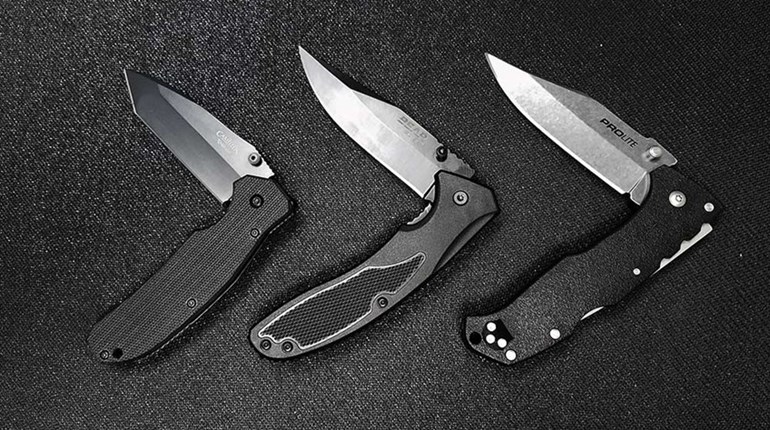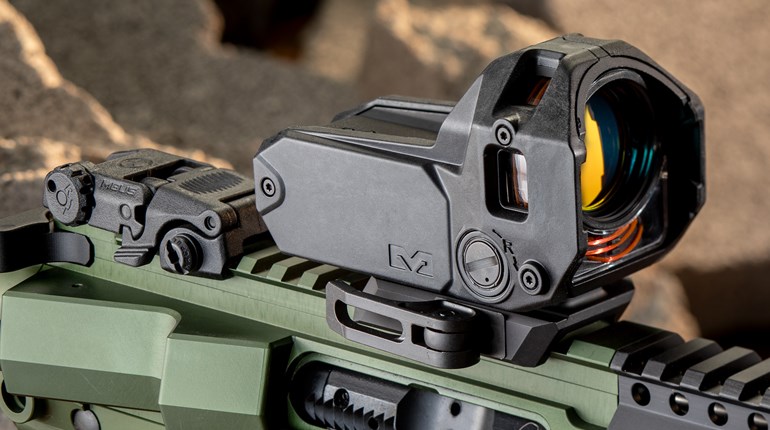
Revolvers are typically viewed as being traditional, but a look through history reveals they often have been at the forefront of advancements in technolgy, design and practical concepts. The idea of having multiple rounds at your disposal, without reloading, to deal with a bad situation was made a widespread reality by the revolving cylinder. Many underlying principles of personal protection such as holster carry, presentation and close-range shooting techniques were developed and then refined with the revolver. Indeed, the very notion of a handgun being employed as the primary means of self-defense grew in popularity as the result of revolvers being perfected for the task. Granted, all this may seem commonplace now, but back in the day, it was nothing short of a, well, revolution.

While the hot, new handguns everyone seems to talk about each year are semi-automatic pistols, innovation continues with revolvers. Much of today's progress focuses on concealed carry, with lightweight, short-barreled, small-frame revolvers receiving a large amount of attention from manufacturers and consumers alike. The latest revolver development is the use of polymer in the gun's frame as a way to reduce weight and cut cost. Taurus demonstrates both of these benefits in its double-action Protector Poly, a five-shot snubby that weighs less than 16 ounces and retails for less than $350.
Forging metal is at the heart of Taurus operations in Brazil, but the company is certainly not against using polymer in handguns. It offers a variety of polymer-frame semi-autos, and in fact, one unit of the multifaceted Taurus conglomerate deals with the manufacture of plastic goods. In addition, Taurus has been successful in experimenting with materials other than steel and aluminum for revolver frames, using a titanium alloy in its Total Titanium series introduced in the late 1990s. With polymer being widely accepted for semi-auto pistol frames, applying similar technology to revolvers is a logical progression.
Of course, a revolver frame differs considerably from a semi-auto pistol frame, particularly in the way it must deal with the force produced by firing. With no mass from a slide to move and soak up some energy, most of the recoil force acts directly on the frame. Not surprisingly, a frame made completely of polymer would not last very long. In order for the Protector Poly to handle the pressures generated by .38 Spl. +P ammunition, Taurus supplements the polymer with steel.
From the outside, the majority of the Protector Poly frame appears to be polymer. Underneath, however, is a sub-frame of 410 stainless steel. True to Taurus' core capability, the two-piece frame starts as a pair of forgings before each is overmolded with Durethan, a fiberglass-reinforced nylon. Two screws secure the lower part of the frame, which includes the butt and trigger guard, to the upper. One is located at the front of the trigger guard and passes beneath the cylinder window; the other runs in front of the hammer, just below the rear sight. The cylinder, yoke and barrel are stainless steel, while the trigger and hammer are metal-injection-molded parts. Areas that come in direct contact with propellant gases, such as the barrel sleeve and the bottom surface of the topstrap, as well as the recoil shield, are made of metal with no polymer overmold.
Although the Protector Poly is similar in size to the Taurus Model 85 revolver, the shape of its frame is considerably different. It's wider near the front, higher around the hammer, and the cylinder latch sits in a raised area of polymer. Holsters that are made specifically for the Model 85, particularly tightly molded Kydex versions, may not fit the Protector Poly. Likewise, laser sights for the Model 85 will not work with the Protector Poly, but both Crimson Trace and LaserLyte plan to remedy that situation.

Another notable area of difference between the Protector Poly and other small-frame revolvers is the grip. The Taurus Ribber grip on the Protector Poly is extended to allow enough room for almost three full fingers. Its ergonomics are excellent, providing an outstanding interface between shooter and gun that is especially appreciated during double-action firing. When I tested the revolver, I was pleasantly surprised at how natural it was for my strong hand to obtain a proper purchase on the gun from the holster—something I can't say about most small-frame revolvers because of their short grips.
Since the Protector Poly is designed for self-defense and concealed carry, Taurus takes care to ensure there are few sharp areas on the revolver to snag on clothing or other items during the draw stroke. Every external edge of the gun, save for the checkered hammer, is rounded to facilitate presentation from a holster and under clothing. In addition, the polymer overmold gives the frame a slick surface that helps it come out of—and return to—a holster smoothly.
A second benefit of the polymer surface is corrosion resistance. Even in a holster, a gun carried daily can be exposed to moisture, namely in the form of sweat during warm weather or periods of high activity. Fingerprints are another corrosion-causing culprit. Since nylon doesn't rust, neither of these are a concern when you're carrying the Protector Poly—at least on the frame.
The sights on the Protector Poly are decently sized for a compact handgun, but I do have a couple complaints. First, the positives: At the rear, a wide notch is molded into the topstrap, and a U-shaped void in the frame just behind the sight allows more light to enter the notch. It's a rugged, low-profile setup that's completely adequate for close-range work, but I can't say the same for the front sight.
The steel ramp at the front includes a short section of red, polymer piping that provides pretty good contrast against targets in moderate lighting conditions, but the little red dot quickly disappears in low light. I'd prefer something that offered greater visibility. In addition, the ramp is fastened to the barrel rib with a tiny screw, which came loose while I was testing the gun. Although the ramp remained attached to the rib and the slight shift in its position didn't seem to affect accuracy, I wouldn't want to carry the revolver with the sight in this state. Since the screw that holds the sight in place resides beneath the piping, tightening it first requires removing—and then later replacing—the insert. Neither of the sights are adjustable.

Despite my thoughts on the Protector Poly's sights, the little revolver did well on the range. I conducted a formal accuracy evaluation at 25 yards from the bench, where the gun turned in a few five-shot groups that were downright impressive considering its compact size.
While some shooters, including several who regularly write for this magazine, argue the usefulness of accuracy results obtained while shooting a snub-nose revolver at 25 yards from a solid rest, I consider the excercise practical in that it establishes a baseline for comparison. Although the procedure doesn't give a true indication of the gun's mechanical accuracy—there is still room for operator error—it provides a good idea of what you can expect when you take your time while firing the revolver in single-action mode. Plus, I like to know what the gun will do at distances beyond across the room, just in case I need to push it into action at longer ranges.
Thanks to a crisp, single-action trigger pull, the Protector Poly produced an overall group-size average of about 3.5 inches at 25 yards with three different loads. I couldn't ask for anything better from a gun with a sight radius of about 3 inches.
Perhaps even more telling of the Protector Poly's ability as a defensive handgun was its performance when I fired it offhand in double-action mode at 7 yards. Again, the revolver didn't disappoint. The overall group average for the three loads tested at this range was about 1.5 inches. The double-action trigger pull was a bit stagey, but the control provided by the extended grip helped me overcome it.
Lightweight, accurate and tough, the Taurus Protector Poly represents yet another step in the revolver's evolution brought about by the demands of concealed carry. Its polymer frame is anything but traditional, and it may make the gun even more practical considering its intended role. The Protector Poly proves the revolver continues to be a thoroughly modern option for self-defense.
Specifications
Manufacturer: Taurus International Manufacturing; (305) 624-1115
Action Type: Double-action revolver
Caliber: .38 Spl. +P
Capacity: 5 rounds
Frame: Durethan-overmolded, 410 stainless steel
Barrel Length: 1.88 inches
Rifling: 6 grooves; 1:16.5-inch RH twist
Grips: Rubber, Taurus Ribber
Sights: Fixed rear notch, fixed front ramp with red polymer insert
Trigger Pull Weight: 4 pounds, 8 ounces (single action); 12 pounds, 8 ounces (double action)
Length: 6.44 inches
Width: 1.28 inches
Height: 4.88 inches
Weight: 15.8 ounces
Accessories: Two Taurus Security System keys, grip-removal tool, manual
MSRP: $349
Shooting Results
| Load | Velocity | Group Size | ||
| Smallest | Largest | Average | ||
| Hornady Critical Defense 110-grain FTX | 803 | 1.50 | 3.63 | 3.08 |
| DoubleTap 110-grain Barnes TAC-XP +P | 1,097 | 3.06 | 3.75 | 3.32 |
| PMC Bronze 132-grain FMJ | 721 | 3.00 | 4.75 | 4.00 |
Velocity measured in fps 10 feet from the muzzle for 10 consecutive shots with an RCBS AmmoMaster chronograph. Temperature: 83 degrees Fahrenheit. Accuracy measured in inches for five consecutive, five-shot groups at 25 yards from a sandbag rest.





































